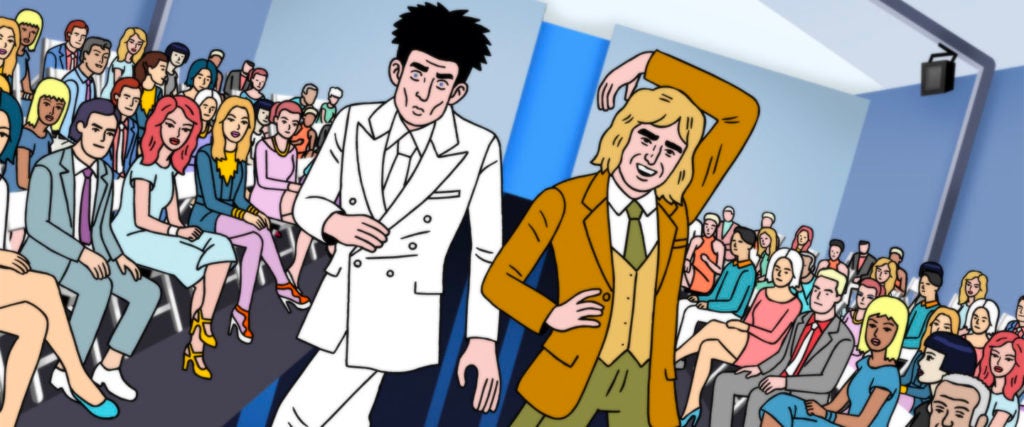Every so often, Michael Colton will check Twitter to see if anyone’s talking about that show he worked on so long ago — the one that practically disappeared into the ether. “I haven’t searched in a while,” he tells me, “but I will search ‘Zoolander cartoon.’ And it’ll just be, like, one random tweet: ‘Wait, there’s a Zoolander cartoon?!’ It’s frustrating because people will be like, ‘How come I never heard of this?’ It’s just an automatic assumption that it’s bad. Obviously, we’re biased, but we don’t think it’s bad.”
First of all, yes, there is a Zoolander cartoon — you can watch it right now on CBS All Access. Also, yes, don’t be surprised if you haven’t heard of it — most people haven’t. And finally, yes, the animated show, known as Zoolander: Super Model, isn’t bad. Maybe a little uneven, but also delightfully goofy and silly — in other words, much like the 2001 film that inspired it. Zoolander: Super Model has been part of Colton’s life for about a decade now. There was no splashy premiere, no press tour. Sometimes things get made with the greatest enthusiasm and then, for myriad reasons, they end up just disappearing. That’s what happened here.
When I get on Zoom to talk to Colton, his writing partner John Aboud and series director Aaron Augenblick, it’s the first time they’ve all been “together” in years. (Colton and Aboud are based in L.A. Augenblick is in Brooklyn.) It’s also the first time they’ve ever gotten to do an interview about a show they all had a blast making. It’s a happy reunion — the three of them often talk more to each other than they necessarily do to me, giddily reminiscing about crafting an animated show that harked back to the cartoon series of their youth. They’ve long since moved on to other projects, but they want to make one thing clear: They’re really proud of Zoolander: Super Model. “I hadn’t seen it in a long time,” says Augenblick, “but I sat down to watch it. It was really funny. I mean, I haven’t watched it in five, six years, or something — and I was laughing throughout.”
If you go to CBS All Access and pull up Zoolander: Super Model, you’ll find an 84-minute “film” featuring the further adventures of Derek and Hansel as they fight crime. Some things have changed since the movie. Derek now has superpowers that he activates by invoking his distinctive supermodel looks — “Blue Steel!” “Crushed Denim!” “Stone Phillips!” — while Hansel uses gadgets and his expert action-hero training. There’s also a monkey named Accessory.
Many cartoons based on popular movies — like The Real Ghostbusters — don’t feature the original actors reprising their roles. Not Zoolander: Super Model: Ben Stiller and Owen Wilson are part of the voice cast, as well as Christine Taylor as Derek’s love interest Matilda and Jerry Stiller as his agent Maury. Zoolander: Super Model wasn’t intended to be a movie — it’s actually a series of nine episodes that, after the fact, were crammed together. But that’s getting ahead of ourselves. Long before that decision was made, everybody involved in the project was extremely excited about the show’s potential. So what went wrong?
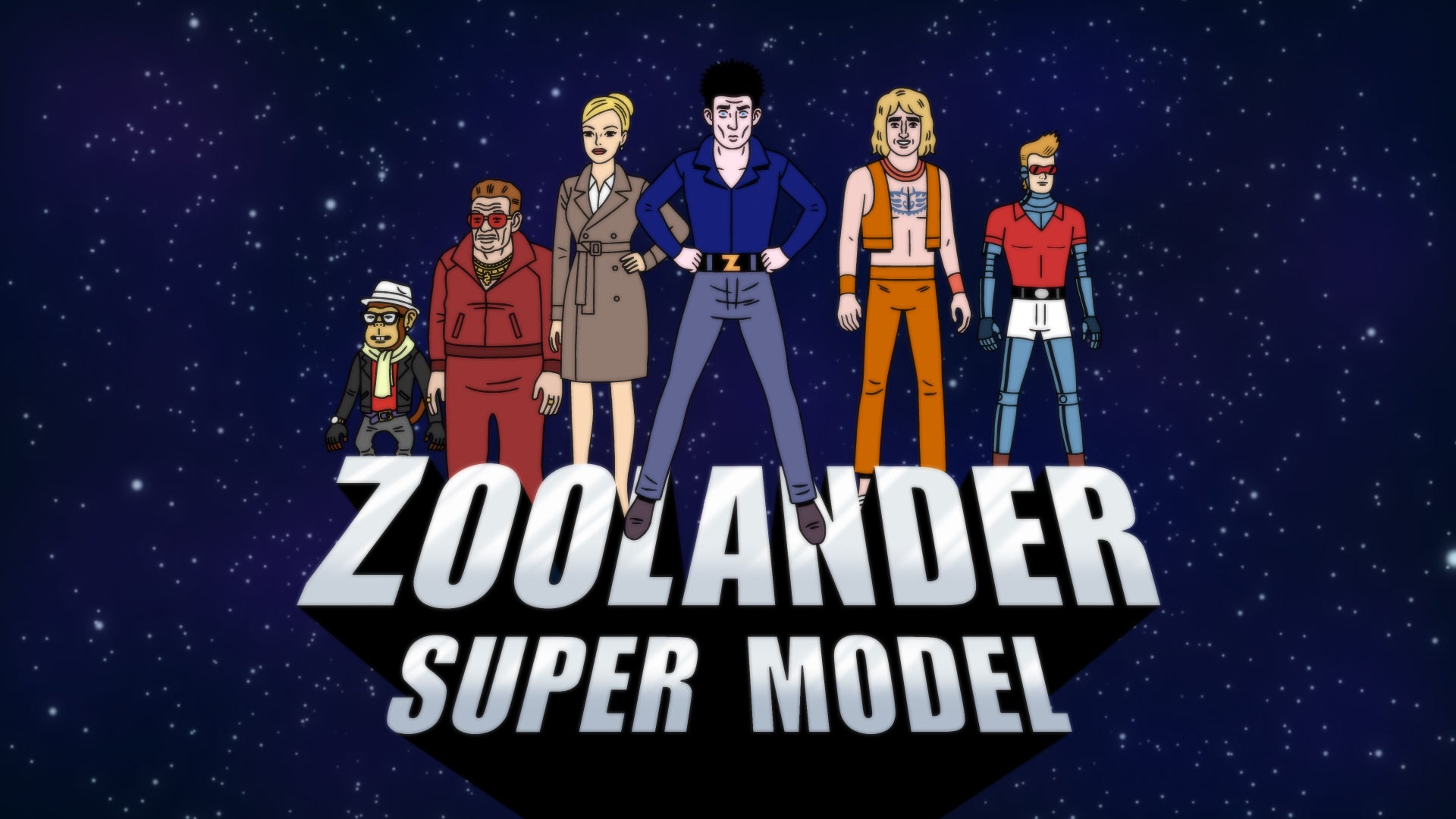
Zoolander: Super Model got started when Red Hour, Stiller’s production company, reached out to Colton and Aboud in late 2010. Paramount, which had released Zoolander, was interested in making an animated show. Colton and Aboud had worked with Red Hour on a couple other projects and were told, “We don’t know what this is going to be. Do you have a pitch?” Around December 16th, the writers came up with a treatment: “This online series is a Saturday-morning superhero take on the world of fashion and celebrities. Each episode is four minutes long and includes both an adventure story and a tag with a didactic, moralizing [message like] G.I. Joe, Super Friends and that Mister T cartoon where he coached a gymnastics team and had a dog with a mohawk.”
Colton and Aboud knew this world of 1980s cartoons really well — plus, they’d loved Zoolander — but they also drew from another source of inspiration that they never told Red Hour (or Augenblick) about. A few years earlier, the writers had started developing a project that never saw the light of day. “MTV was going to do an animated superhero show, starring Paris Hilton, but written by and [produced] by Stan Lee,” Aboud says, clearly aware of how ridiculous that concept sounds. “It was going to be Paris Hilton’s adventures as a superhero battling Beverly Hills crime.”
The idea went nowhere, but during that process Colton and Aboud dreamed up a collection of outrageous Saturday-morning-style bad guys for Hilton to battle. So when the Zoolander cartoon was mentioned to them, the writers realized they could recycle the Hilton villains for the new show. On Zoolander: Super Model, our dimbulb heroes tangle with The Red Carpet (a red carpet come to life as a monster), Dr. Botoxo (a Jekyll-and-Hyde beauty specialist) and The Paparocto (a Doc Ock-style villain who used to be a paparazzo). They’re all from the aborted Paris Hilton project. “Basically, Zoolander is like Paris Hilton,” Colton says, “A dumb, vapid supermodel type. So the idea was perfect.”

Stiller loved the idea of this throwback cartoon. The writers figured he would. “Ben is a comedy nerd to end all comedy nerds,” Colton says. Adds Aboud, “He gets the benefit of riffing on a beloved piece of pop culture that shouldn’t have been beloved for any reason other than you were a kid when you saw it.” And, soon, Paramount was on board, too. “This wasn’t set up at a network or studio or streamer,” Colton says. “Paramount was paying for it, and then they were going to figure out where to set it up later. They wanted it to be webisodes. I think we settled on, ‘Let’s [make them] 10-minute chapters.’”
Although almost no one has heard of Zoolander: Super Model today, the show’s development got a brief mention on the New York Times’ website at the time. On October 20, 2010, the paper revealed that Stiller was going to turn Zoolander into “a series of Web-based digital shorts.” “It’s just a way to say, ‘Hey, let’s go do a couple of little five-minute episodes,’” Stiller told the Times, “as opposed to saying, ‘Hey, let’s pitch it to the studio and then let’s have a fight over the budget for six months.’”
The next step was to find an animator. Augenblick Studios has been around for about 21 years now, early on fashioning the look of cool niche shows such as Wonder Showzen and Superjail! But Augenblick suspects that it was his work on Ugly Americans, which premiered on Comedy Central in 2010, that helped him get the Zoolander: Super Model gig. “I think [former Red Hour executive] Mike [Rosenstein] was a fan of Ugly Americans, which had echoes of that style,” Augenblick says. Ugly Americans “wasn’t Ren & Stimpy — it was real human characters in a bizarre world. We took a lot of cues from things we had done with Ugly Americans when we approached Zoolander, for sure. We went through a major vetting process. I don’t know if we were being vetted against other studios — I’m assuming we were — but we definitely did.”
“In Aaron, we had the perfect partner to bring it to life,” Aboud says, “because he has a reverence and a love for the history of animation — certainly, that sort of Alex Toth/Super Friends kind of style. You can see the designs he incorporated include elements of the Hall of Justice from Super Friends. It was just delightful.”
Augenblick and the writers obviously shared the same pop-culture reference points, but the director felt like this series could work for a more important reason. “I think great cartoon comedy, it’s truly in your DNA,” Augenblick says. “It’s just a part of you, and it just comes out. That’s what I absolutely adored, immediately, about the whole thing. Look, the idea of Zoolander as animation, it’s almost inherently, maybe, a bad idea. Because anytime they say, ‘It’s just like this, but it’s the animated version,’ it’s rarely good. Gilligan’s Planet? Hammerman, the MC Hammer cartoon? They’re usually very bad. But the script was immediately so knowledgeable about the animation world — it was a parody of those 1980s superhero cartoon worlds, but it was integrated in this really beautiful way with the Zoolander brand.”
Months were spent figuring out how Derek and Hansel should look as cartoons. “We based [the early design] on some of the pulpy old Batman cartoons where they were really pretty buff,” Augenblick says. “They were really hulky, beefy characters — they also had that 1980s beefiness, which was, like, pre-steroids, where they almost feel a little chubby.” Ultimately, he and the producers decided that going in the opposite direction made more sense. “The closer we came to real human physiology, the more it felt like Zoolander. I mean, part of the comedy of Zoolander is that Ben Stiller is not a 23-year-old male model. He’s a guy pretending to be a model. The less cartoonishly handsome they were — the more realistic they were — the funnier.”

Staying true to their superhero inspirations, the creative team envisioned Derek as Superman (the dude with actual powers) and Hansel as Batman (the dude who needs to use weapons and gizmos). Stiller and Wilson were down to voice their characters, and as Colton and Aboud were writing the episodes, they went wild with glitzy cameos. Tim Gunn was the show’s narrator. The Kardashians and Heidi Klum would put in appearances. In his experience working on irreverent, lower-profile animated comedies, Augenblick was used to hiring soundalikes to play famous people. But he quickly learned that wasn’t how Zoolander: Super Model would be operating.
“Early on, Ben was like, ‘When’s Kim [Kardashian] coming [to record her part]?’ And I was like, ‘Oh, we’re going to have this [other] person do it.’ And he was like, ‘Oh, you can’t do that,’” Augenblick recalls. “He’s like, ‘This is Zoolander. When we did Zoolander, we didn’t get a David Bowie look-alike — we got David Bowie. You got to get all the real people.’ And I remember my producer almost had a heart attack because [Colton and Aboud] had a lot of people in there.”
No problem: Stiller has a lot of sway in Hollywood. Also, even though Zoolander had never been a blockbuster, it had subsequently developed a following on DVD and cable. “In 2011-12, Zoolander was so beloved,” says Colton. “Katy Perry wanted to do [the show]. Leighton Meester wanted to do it. Everybody loved it.” For a show that not many people have seen, Zoolander: Super Model is stacked with big names playing themselves. (Kim and Khloe both said yes, and Perry and Meester are pretty funny in it, too.) The supporting cast was also starry. (For instance, Patton Oswalt played Dr. Botoxo.) But in hindsight, the series is also fairly remarkable for the up-and-coming comics it spotlighted. Everyone from Nick Kroll to Andy Daly to Jenny Slate did voice work just as they were starting to emerge as major names. (“John and I used to run a web magazine back in the early 2000s, and we taught a comedy writing course in New York,” Colton says. “Nick Kroll was one of our students. He was just new to the city and doing stand-up.”)
Indicative of how much momentum there was around the series, not only did the producers book the bold-print names they were seeking, it was clear the guest stars took this silly show very seriously. “Tim Gunn is literally my favorite person I’ve ever recorded,” Augenblick says. “He is the absolute sweetest, nicest guy. He would come in by himself — no assistant, no driver, nothing — and he would record, and then after, he would just hang around and chat about stuff. He was so excited to be a part of it.” Gunn was so thrilled that, initially, when there was talk of Zoolander: Super Model coming out around Fashion Week, he started hatching ideas about how to promote it. “He was like, ‘That is amazing! I’ll talk about it to everybody in Fashion Week. I’ll tell everyone all about Zoolander!’”
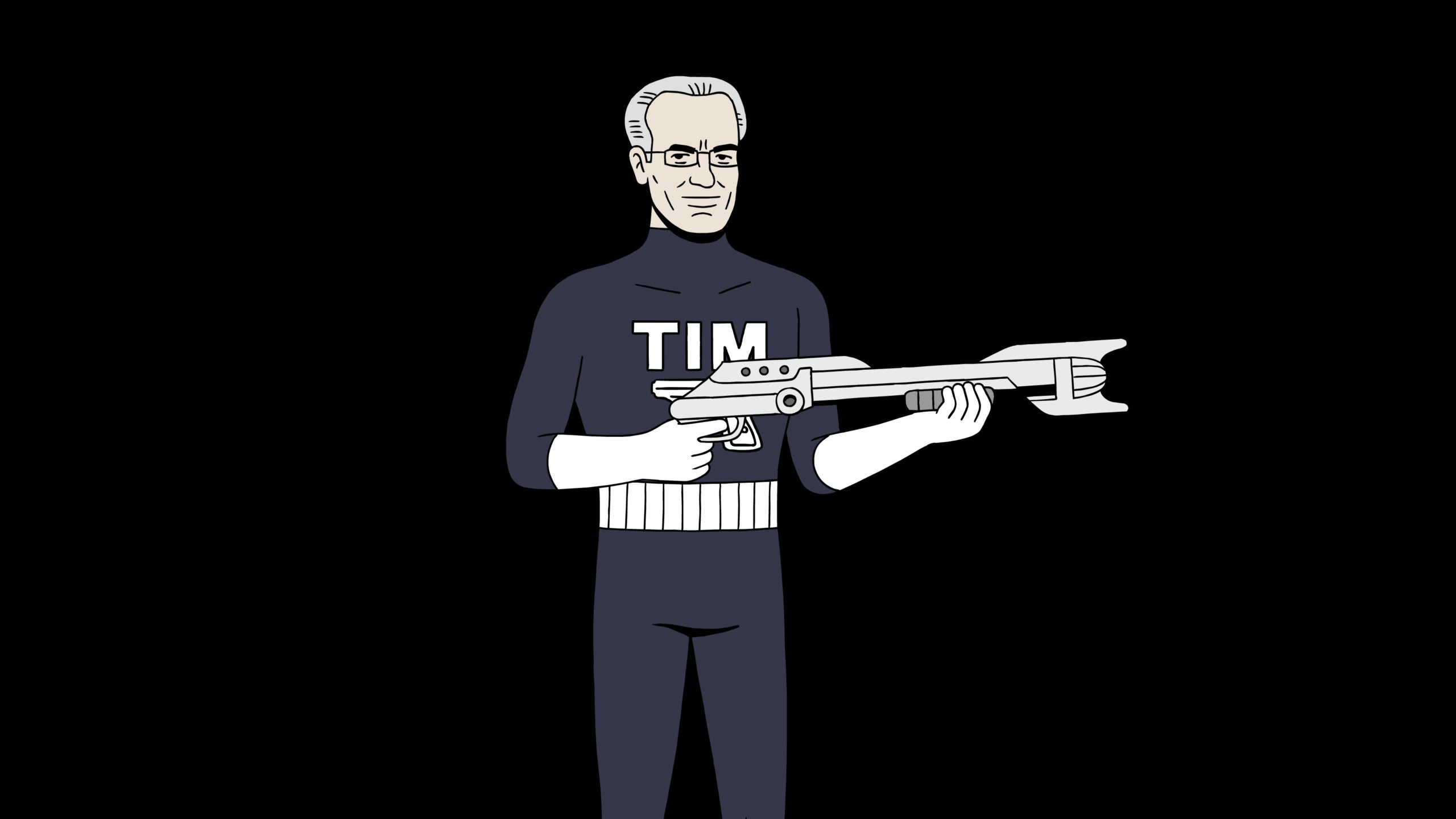
Stiller’s dad Jerry, who died last year at the age of 92, gave one of his final performances as Maury on the animated series. “Obviously, he was getting on in years, and you’d think he’d just phone it in,” Colton says. “But he was like, ‘Why is [Maury] saying this line? What is the motivation?’ He really wanted to know.”
Call it dedication to a part, but it was also because the writers gave Maury some truly bizarre bits of business. As Colton puts it: “Aaron had to be like, ‘Okay, you’ve taken expired bronzing pills, and you’ve now hulked out, and we can see your testicles.’ It was an insane fucking thing, but he needed to know.”
Yes, that is an episode of Zoolander: Super Model — Maury turns into a big, naked, orange Hulk — and Augenblick still can’t quite believe Jerry Stiller was so willing to go with it. “When we did the Hulk stuff, it was a long day, and he was getting a little low-energy,” Augenblick recalls. “And we were like, ‘Oh, we need all the Maury Hulk sounds for the fight sequence with Hansel.’ And, boy, did he turn it on. I mean, look at anything Jerry Stiller’s ever done — when he wants to belt, it’s intimidating. That stuff is so funny.”
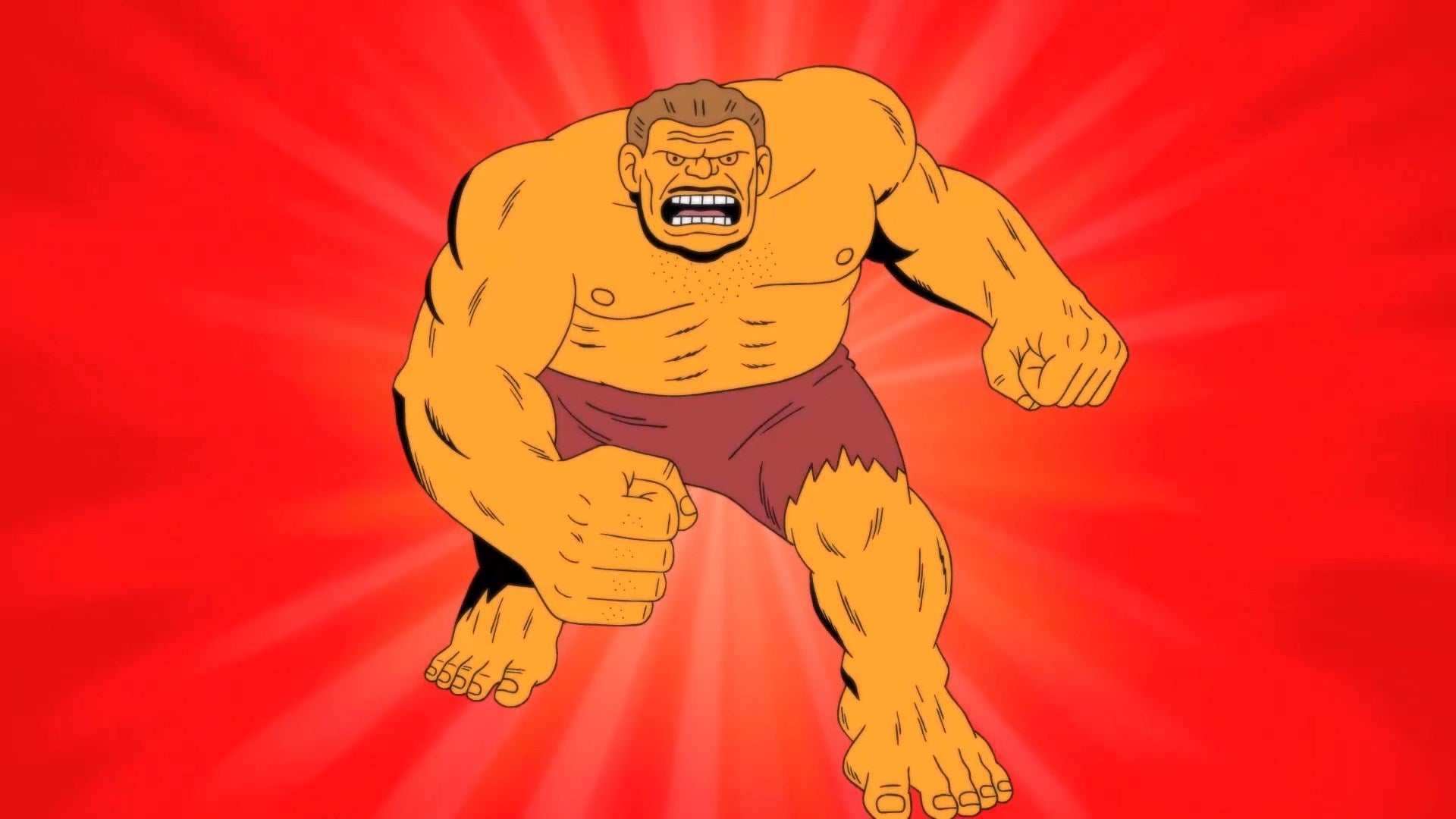
Colton and Aboud wrote Zoolander: Super Model during 2011, getting notes from Ben Stiller as they turned in drafts. Colton still has some of the emails from Rosenstein passing along Stiller’s thoughts. “Ben wants Derek to look more confused and stupid, like in the movie,” Colton reads, laughing. In a scene that makes fun of the inanity of TMZ’s gossip show, the note is simply “Ben wants this to be a lot meaner.” And because the original film was PG-13, Stiller wanted the cartoon to have a similar tone. “Lose one of the butthole references with Botoxo — it’s too much,” Stiller’s note says. “We don’t want it to be too dirty that kids can’t watch this. Let’s go over the level of dirty words, or decide where to start bleeping. Can we have a more censored and sort of a Red Band version?” Sometimes, though, the changes were more personal: Augenblick recalls, laughing, “Because there was a lot of making fun of celebrities [in the show], we’d hear, ‘Oh no, you got to cut that [joke] — that’s actually a really good friend of Ben’s.’”
All three men talk about how hands-on Stiller was about the series, even though he was busy prepping his ambitious, globe-trotting remake of The Secret Life of Walter Mitty, which he starred in and directed. “Lisa Thomas was the animation producer,” Augenblick says, “and she had to find audio studios, like, within a day’s notice in places around the world because Ben was traveling the world. … It was a huge movie, and the fact that he was able to pay any attention to [the animated show] at all was kind of amazing. There were a lot of times we’d be in recording studios and have to wait for him to get off work, which sometimes would be like 1 a.m., because he was working all day on this giant, big-budget feature film.”
For all the buzz around the series, the only big talent the creative team wasn’t able to secure was Will Ferrell, who played Derek’s nemesis Mugatu in the original film. Mugatu had originally been planned to return for the series, but Colton and Aboud started to see a potential hurdle for their project. “I think [a reason Ferrell wasn’t involved] may have been he knew that Mugatu was going to be the featured villain of Zoolander 2,” Aboud says. Just as Zoolander: Super Model was kicking into gear, a Zoolander live-action film sequel was also being planned.
“When we started writing Zoolander: Super Model,” Colton says, “they said, ‘Here’s a script that was written for Zoolander 2’ from, like, two years before. They had been trying to make this for years. But it didn’t get serious probably until, I want to say, 2013 maybe.”
“What started happening was they started looping us into Zoolander 2,” Augenblick says, “and there were a lot of issues with overlap in stories and jokes. There was a point when we were going to be cross-promoting Zoolander 2, and then it became, ‘We can’t get in the way of Zoolander 2.’ It got a little confusing.”
Zoolander 2 didn’t arrive in theaters until 2016, but its languishing development eventually became an obstacle for the show. “I remember there was a time we were recording [Stiller] where it was about Hansel being on fire, or something,” Augenblick says. “And he was like, ‘Oh, we can’t do that, that’s in Zoolander 2. We’re not going to record those lines.’ So [Colton and Aboud] would have to do these last-minute rewrites.”
Plus, because Paramount hadn’t lined up a buyer, who would have dictated Zoolander: Super Model’s format, executives kept changing their mind about how the show should be. Aboud remembers the contradictory comments: “Well, can we reformat it so that it’s three half-hours? Okay, can we reformat it so that it’s 10 minutes?” Colton chimes in: “Paramount kept trying to shift what it was as we were writing it, and it was so maddening. It was like, ‘Let’s just write a full movie.’”
Despite the mixed messages and script notes — hardly out of the ordinary when you’re dealing with a valuable piece of intellectual property like this — Zoolander: Super Model seemed poised for great things. In December 2013 — exactly three years after Colton and Aboud first started working on the project — there was a screening at the high-powered talent agency William Morris Endeavor. By all accounts, it was a huge success. “We loved it,” Colton says, “and people at that screening liked it. We were told, ‘Let’s wait till after Zoolander 2 comes out, and then we’ll sell it somewhere. There’ll be a hunger for it.’”

But then a funny thing happened to the shape of the entertainment landscape. “No one wanted 10-minute [episodes],” says Colton. “Everybody at that time, in 2013, really wanted half-hours and hours. This didn’t quite fit.”
You could blame it on House of Cards and Netflix, which debuted the groundbreaking streaming series in February 2013. That wasn’t that long ago, but back in those days, Netflix was still thought of as that company that sent you DVDs in the mail. House of Cards permanently changed that impression, and it helped do away with the idea of bite-sized webisodes of content as a marketable product. As Colton puts it, with more than a little irony, “Basically, we needed a Quibi.”
With Zoolander: Super Model in the can, Colton, Aboud and Augenblick had to be patient and wait. “If you include the pre-production, this was two years of my studio,” Augenblick says. “It was two years of this being almost the sole project we were working on. It engulfed the whole studio because it was such a big thing — it was feature-film length. It was basically like making a movie. So it appeared to the world like my studio just stopped working for two years — for two years, we had no product out. People were like, ‘Oh, what happened to them? Are they still working?’ We made this thing that never came out.”
Colton and Aboud were luckier. “Our first big feature [script] to be produced was the Penguins of Madagascar movie at DreamWorks,” says Colton, “and the reason we got that was because the producer of that movie used to work at Red Hour. And she called Mike Rosenstein and she said, ‘We need some writers on Penguins. Who’s good with animation?’ And he recommended us. So Zoolander definitely helped us.”
Partly because the writers had been on Zoolander: Super Model from the beginning, they feel a real emotional attachment to it. But the connection ran deeper than that. “Not to get sentimental about it,” Colton says, “but John and I had written rewrites of some movies and staffed on shows, but this was like the first thing we wrote where it was all us. This is our sensibility — if people don’t like, it’s on us. But then, when it just didn’t air, it was just like, ‘Uh…’”
But why worry? After all, Zoolander 2 would be the show’s salvation. Once that was a hit, Zoolander: Super Model would be ready to be unleashed on the world. There was just one snag. “Zoolander 2 just didn’t work,” says Colton. Critically derided and a massive bomb, the sequel, released in February 2016, didn’t connect to the zeitgeist in the same way. Coming out 15 years after the original, the sequel felt outdated and tired.
“Look, John and I actually worked on it a little bit,” Colton says. “We went to Rome in pre-production and helped out a bit. I think people just had knives out for that. Even though they love the character, they just felt like it went too far in fan service — there were too many celebrities, that kind of thing. So, after it came out, of course we were all like, ‘Well, so what happens to our thing?’ And we didn’t hear anything for a long time. And then, all of a sudden, we heard, ‘Oh, it’s going to Netflix UK.’”
Most American Netflix subscribers aren’t aware that certain programs that stream here don’t necessarily stream in other countries — and vice versa. (Small example: ESPN’s The Last Dance premiered on Netflix in the U.K.) And so, without any explanation, Zoolander: Super Model made its unheralded debut on Netflix UK in the summer of 2016. “It just appeared there,” Colton says, “with no publicity.”
If Stiller and company had been happy with the series, why did they essentially dump it, even if Zoolander 2 had tanked? The show’s writers and director don’t have any insider info, but Augenblick hazards a guess. “The screenings always [went] really well — people really liked it and were really laughing,” he says. “Everyone really enjoyed it. But it was a tricky project because it was a pretty high price tag for a show that’s this esoteric and weird. It’s a weird show, but it’s a big brand, but it’s like an offshoot, so it lived in a weird zone.”
In other words, if this had been any other offbeat parody of 1980s superhero cartoons, it might have found a home at left-of-the-dial stations like Adult Swim. But this was Zoolander — a major studio property — and therefore was presumably a more expensive endeavor. As Augenblick puts it, “I remember [my agent] saying to me, ‘We can’t sell it — not because it’s not good, but because it lives in a very strange world.”
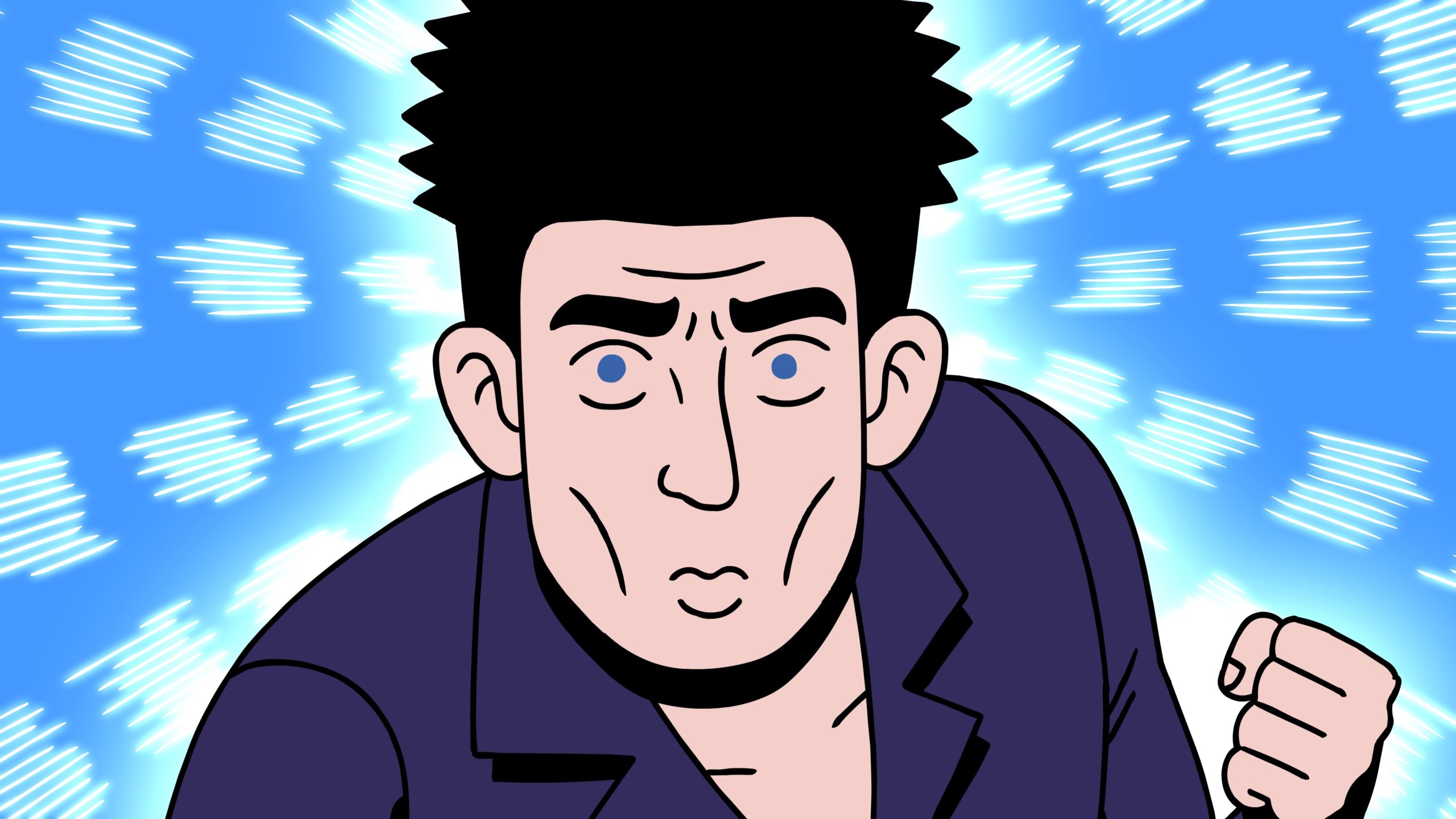
The launch was virtually uncovered. The Canadian site Exclaim! found a trailer. Yahoo! Movies UK published a story with the headline “Animated Zoolander Movie Inexplicably Appears on Netflix.” Writer Ryan Leston noted, “Zoolander: Super Model has made it to Netflix as one streamable file with a runtime of 84 minutes… but it doesn’t feel like one single story. Instead, it feels more like a miniseries that has been edited together and dumped online to cut its losses. Probably in the hope that no one would be stupid enough to watch it.”
That negative assumption has hung around Zoolander: Super Model ever since — if you even knew it existed, of course. “I think there’s a general feeling, especially after Zoolander 2, that it’s just bad,” Colton says, “but John and I stand behind it. I mean, we think it’s fun and we love the cast.”
Is Zoolander: Super Model an acquired taste? Probably. The show’s off-kilter humor, proudly bizarro digressions and dumber-than-dumb gags won’t be for everyone. That said, those who recognize the reference points will appreciate precisely why Derek Zoolander is perfect for a Super Friends universe. He and Hansel’s massive stupidity — and their complete confidence in their handsomeness and depth — is nicely juxtaposed by the action-packed, intentionally one-dimensional stakes of 1980s superhero cartoons. Especially funny is “Model Behavior,” the show’s riff on the “Knowing Is Half the Battle” PSAs that appeared at the end of every G.I. Joe episode — except these are entirely unhelpful. (No, kids, don’t listen to Derek’s advice to get plastic surgery.)
Although a little hit-or-miss, Zoolander: Super Model is a fun little excursion, and Augenblick is right that it holds up. But they acknowledge the one storyline that’s dated badly: It involves a strange phenomenon in which the world’s most beautiful women are suddenly horribly fat — which the super-superficial Derek and Hansel consider a fate worse than death. (For instance, the tabloids call the Sex and the City star Sarah Jessica Porker.) “If we did it today, we would not do that joke,” Colton says about the body-shaming storyline. Aboud adds, “The joke is on Hansel and Derek and their shallow values. But I think, ‘Why go there?’” And maybe they’d cast someone other than Kroll to voice Frankie J-PEG, the crimefighters’ gay robot stylist. But even so, Augenblick is pleased with how Frankie’s sexuality is treated on the show. Talking to Colton and Aboud, he says, “It felt very poignant where you did the whole thing of him coming out as gay to his parents.” It’s also pretty amusing.
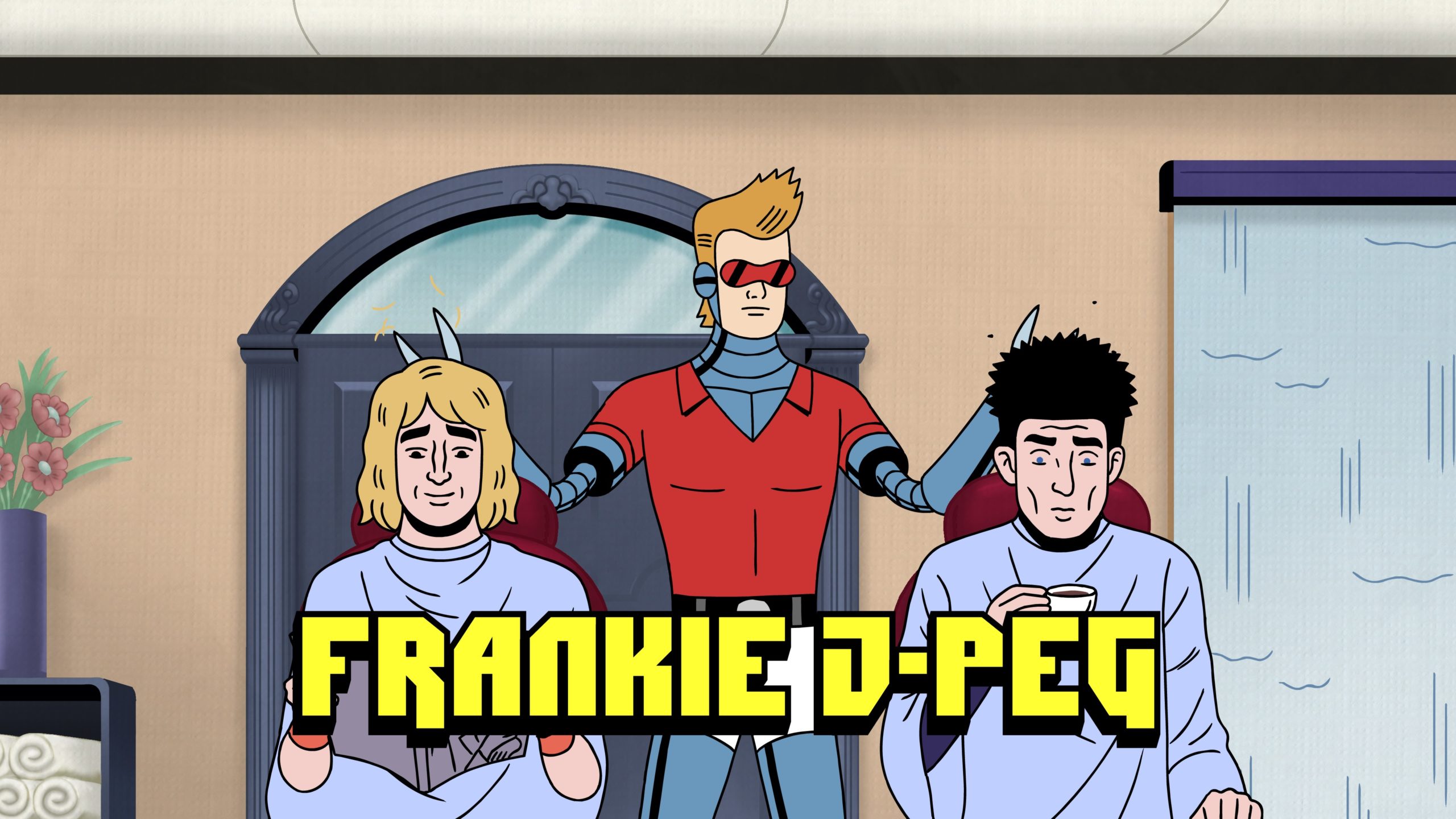
In an age of greater sensitivity, even recent comedy can suddenly feel cringey. Happily, Zoolander: Super Model, despite being about eight years old, largely avoids those pitfalls. The show is clear that its nitwit heroes are the butt of the joke — they’re painfully out-of-touch with how the world works. But this might also explain why Zoolander 2 and the animated series failed to connect. The idea of shallow male models felt novel in the early 21st century, when the culture still mostly thought of women in the role. But in recent years, the joke doesn’t feel as fresh. Maybe Blue Steel’s moment has passed.
When the show popped up on CBS All Access last summer, there was some internet attention, but little more than a collective shrug. Even its creative team weren’t aware that it was streaming in the U.S. “I got a text from my brother,” Augenblick says. “He was the only person I’ve ever known that had CBS All Access. And he was like, ‘Do you remember that Zoolander thing you did? It’s on CBS All Access.’ I was like, ‘You’re lying.’ And he sent me a screenshot, which I think is what I sent you guys.”
Colton adds, “We never get asked about it because so few people have seen it.”
CBS All Access changes its name to Paramount+ on March 4th. Will Zoolander: Super Model stay on the platform? Probably. Will anyone bother watching it? That’s hard to say. But for these three guys, they’re just happy that after all the years of swearing to their friends they were turning Derek Zoolander into a cartoon, they can now prove they weren’t lying.
“I can’t tell you how excited I was when I saw that [it was on CBS All Access],” says Colton. “At least people can watch it. Maybe they won’t like it. That’s fine. But it now exists in the world.”
